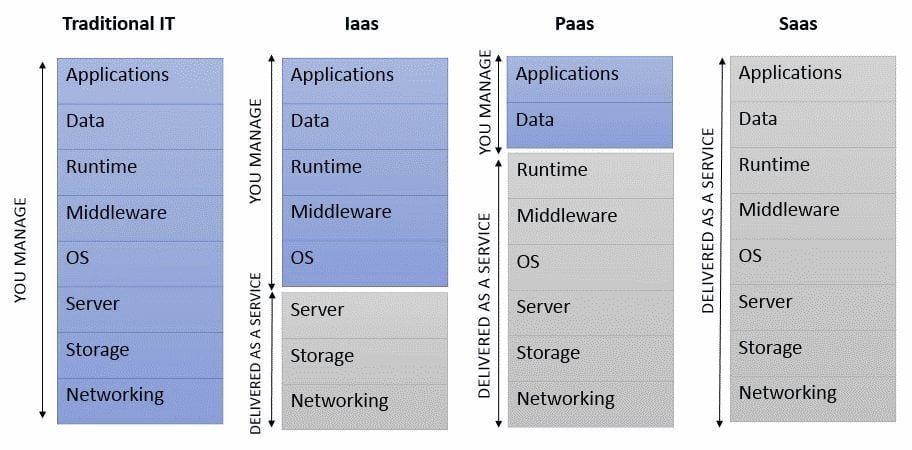Acronyms were so much easier in the late 20th century. When it came to “cloud stuff,” all anyone talked about were ASPs, or Application Service Providers. This caused some confusion because asp was also the extension that web sites running on the Microsoft stack used. Asp was (and is) the name used to refer to several species of venomous snakes, which while cool, probably didn’t add to any confusion. Then, as if bitten by an asp, the ASP acronym began to die. It was ultimately replaced by the term SaaS, or Software as a Service. It’s unclear whether the mixed case approach to the acronym that was the draw or if it was just plain convenient to have “as a Service” on the tail end of the expression, but SaaS took off and was ultimately responsible for the creation of a variety of derivative acronyms.
We’ll cover a variety of these acronyms, but place particular emphasis on the three that are most commonly used.
The Usual Suspects
SaaS (Software as a Service) is an application that is completely outsourced, i.e. the organization that is using it doesn’t own or deploy any hardware or software. Organizations that sign on to SaaS offerings simply consume the software, which is delivered as a service via the Internet. Inside a business, the end user is typically a business person.
Platform as a Service (PaaS) moves the responsibility for developing and managing both the application and its associated data from the cloud to the organization that is using it. Companies that want to offer SaaS products to customers may well use a PaaS offering to outsource the management of the physical servers, operating systems, network, etc. Web and application developers are the typical end users.
Infrastructure as a Service (IaaS) involves outsourcing the hardware resources (typically servers and network) while the software stack — from the operating system on up — is managed by the subscribing organization. IaaS is popular among organizations who want to exercise more control over the delivery of their product/service than they can get from PaaS. The IT department is typically the user here and they set up the IaaS to offer something closer to PaaS to their colleagues who are developers.
Those descriptions resulted in 191 words being written. Since a picture is worth a thousand words, the following image will be a bit more than 5.236 times as informative as what you just read.

Friends of the Usual Suspects
Since some companies operate under the misapprehension that adding “as a Service” to any product offering they have, there are a litany of other “as a Service” acronyms that have sprung to life. Rather than tackling each of them, we’ll provide a few more that you might come across with some frequency.
DBaaS (Database as a Service) is a cloud-based service wherein the service provider hosts and manages the data for the customer. Although SQL-based databases are most frequently offered as part of DBaaS offerings, there are providers of noSQL databases in the cloud as well. While the structure of the database (the data model) is left to the discretion of the application developers maintenance of the database, e.g. managing uptime, replication, failover, etc., falls under the purview of the service provider.
IDaaS (Identity as a Service) is an identity management and authentication infrastructure managed by a third-party service provider (an MSP or Managed Service Provider) that delivers its capabilities via a cloud service. IDaaS offerings include SSO (Single Sign On) administration, user management, and more.
While not exhaustive — new aaS acronyms seem to be created daily — the aforementioned services hopefully provide a solid foundation for you as get better acquainted with the growing array of cloud services. The underlying principle of leveraging services is the common thread that binds them. Delivery of these services from MSPs allows organizations to both get started and scale with unprecedented ease and with minimal to no CapEx. They have, and continue to, fundamentally change the way the connected world operates.
